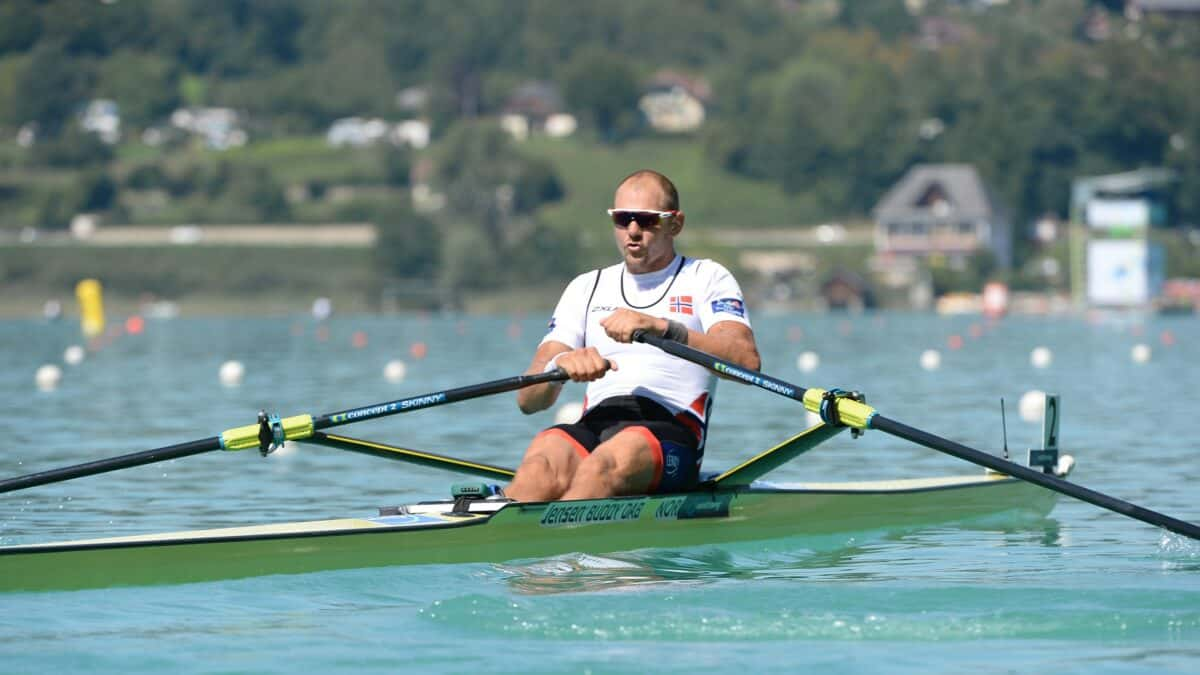
08 Oct 2015
Higher, Faster, Older – the age of Olympians
A parallel trend to breaking records is the growing number of athletes staying in sport longer. Through not only staying involved, but succeeding at the highest levels of competition, these aging athletes are challenging preconceived notions of human potential and adding a new dimension to sports like rowing: longevity.
As athlete retirement age increases, the possibility for participation in multiple Olympics has also opened up. Older athletes are making up a larger and larger proportion of the rowers at each Games and for an increasing number, representing their nation at three, four, or even more Olympics is not as crazy an idea as it once may have been. The question remains, are the still competitive in their later years?
You might be forgiven for thinking that the medals are still going to the younger athletes – on the whole they are – but then there are the rowers who seem to win and keep on winning one Olympics after another. Elisabeta Lipa’s (Romania) unparalleled record of eight medals (five gold, two silver, one bronze) at six Olympic Games and Sir Steve Redgrave’s (Great Britain) incredible streak of five gold medals at five consecutive Games are two of the finest examples of longevity within our sport. Will these types of legendary careers become more common and can athletes remain competitive for longer periods?
A quick look at the number of Olympic rowers with three or more gold medals shows a clear trend over the past three and a half decades. The average age of retiring for multiple gold medalists has risen significantly within the last 15 years. Olympic Champions like Olaf Tufte (Norway)will be 40 at the Rio 2016 Olympics and Ekaterina Karsten (Belarus) will have turned 44 a few months before the Games. Both Tufte and Karsten qualified their boats for Rio at the 2014 World Rowing Championships.
[PHOTO src=”121718″ size=”mediumLandscape” align=”right”]
Although there are increasing numbers of older athletes taking part across all of rowing’s Olympic boat classes, the men’s and women’s single sculls are good examples of the trend. Since 1976, the average age of male and female single scullers in the Olympic final has risen by roughly seven years from around 24 to 31.
[PHOTO src=”121719″ size=”mediumLandscape” align=”right”]
[PHOTO src=”121720″ size=”mediumLandscape” align=”right”]
The gold medal trend is also showing that Olympic gold is being won by older and older athletes. Does this mean that age has something to do with an athlete’s ability to make an Olympic final and also, it seems, win a gold medal?
A 2014 study from Denmark may have the answer. The paper, “Physiological Characteristics of an Aging Olympic Athlete,” published in the journal Medicine and Science in Sports and Exercise, examines over 20 years’ worth of testing data of Danish rowing legend Eskild Ebbesen from the age of 19 to 40. Ebbesen competed at five consecutive Olympic Games, winning three gold and two silver medals in the lightweight men’s four between 1996 and 2012.
Two of the authors of that study were Dr Lars Nybo and Dr Nikolai Nordsborg of the University of Copenhagen. Their work suggests that aerobic and anaerobic capacity can be maintained in highly trained athletes up until age 40, but that may not be a universal limit. “This is highly individual,” they say. “It depends on training status and effort. We cannot say when VO2 max is inevitably reduced, but around age 40 to 50 is a reasonable estimate.”
Thinking long-term rather than simply season-to-season can also help provide perspective and balance within a lengthy rowing career. According to Nybo and Nordsborg, “an elite career can last several decades. So it may not be a catastrophe if, for example, you miss a World Championship for various reasons. You should be able to return and compete at the same level.”
As we age, our maximal heart rate falls steadily, which would seem to mean reduced oxygen getting from the lungs to muscles during training and racing. But, just like a rower racing at low stroke rate will try to get more out of each stroke, the heart compensates for lower frequency with increased volume, or oxygen pulse.
“As long as cardiac output is maintained,” say Nybo and Nordsborg, “a reduced maximum heart rate is not a problem.”
Interestingly, the Eskild Ebbesen study found that technical improvements did not play as significant a role as is commonly assumed in compensating for reduced physiological capacity. “Because both physiological and performance capacities were maintained, it seems unlikely that efficiency was increased. A small undetected effect cannot be ruled out, however,” say Nybo and Nordsborg.
So getting older does not necessarily mean getting slower and as athletes today are being tracked and monitored as never before, the information pool will continue to grow.
As more and more coaches and rowers look into the future and plan out their careers, thinking long-term has become more important.
Read about athletes still rowing 18 years later at the World Rowing Championships in Aiguebelette – 1997 and 2015: http://www.worldrowing.com/news/rowing-from-1997-world-champs-and-again-2015

